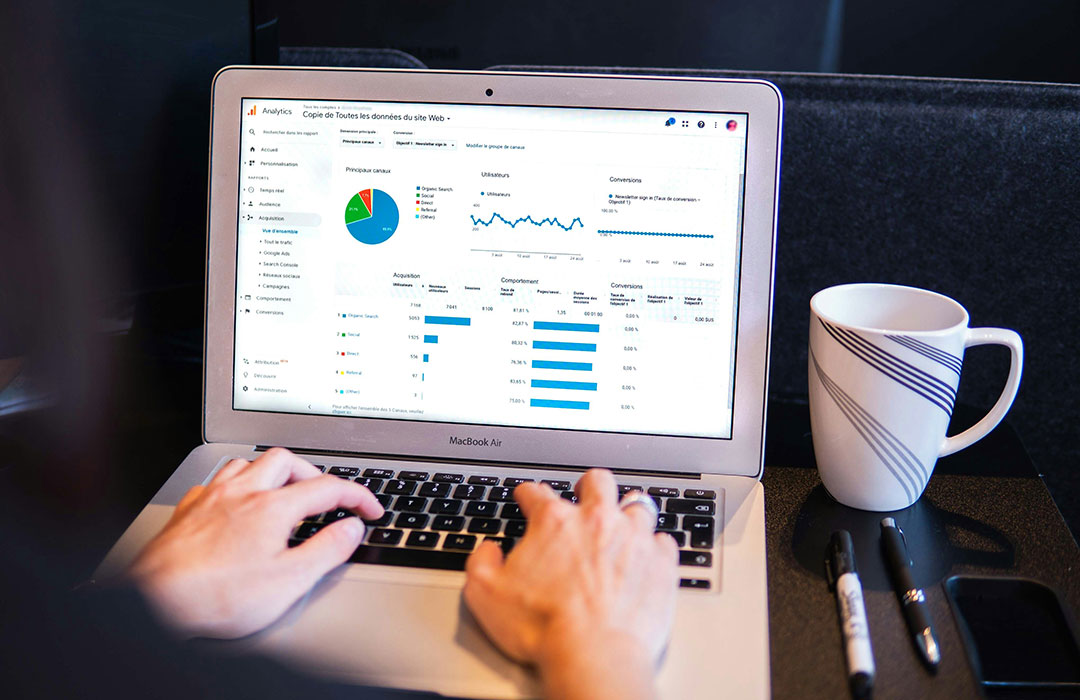Imagine if your website could rank higher on search engines. This would bring more traffic and boost your online presence. Search engine optimization (SEO), especially on-page SEO, makes this possible. On-page SEO helps web pages rank higher and attract more relevant visitors.
You can make your site more visible by tweaking content, meta tags, headers, and images. This leads to more traffic and a more substantial online presence. Effective SEO strategies are key to achieving this.

On-page SEO is vital for any site that wants to climb the search engine ranks. You can grow your online presence and attract more visitors with the right strategies. So, what’s the secret to on-page seo, and how can you apply it to your site?
Key Takeaways
- On-page SEO is crucial for improving website ranking on search engines.
- Optimizing individual web pages can drive more traffic and increase online presence through search engine optimization (SEO).
- Effective on-page seo strategies include optimizing content, meta tags, headers, and images.
- Search engine optimization (SEO) is essential for increasing online visibility and driving more traffic.
- On-page SEO can help boost business by increasing online presence and driving more traffic through effective search engine optimization (SEO) techniques.
- Understanding on-page seo is vital for any website looking to improve its ranking on search engines using search engine optimization (SEO)
Understanding the Fundamentals of On-Page SEO
On-page SEO is key in digital marketing. It affects how well a website ranks on search engines. By making a website better, businesses can get more people to visit their site. On-page SEO helps search engines understand a website’s structure and content.
There are essential parts to focus on in on-page SEO. These include content optimization, meta tags, headers, and image optimization. Improving these elements can help a website perform better and rank higher on search engines.
- Improved website ranking and visibility.
- Increased traffic and engagement.
- Enhanced user experience.
- Better conversion rates.
Adding on-page SEO to a digital marketing plan can boost a business’s online presence. It helps them stay ahead of their competitors.
The Critical Role of Keyword Research in SEO Strategy
Keyword research is key to a good SEO strategy. It finds the words and phrases people use to look for what you offer. By doing deep keyword research, you can see the right keywords to aim for. This makes your content hit the mark with your audience.
Tools like Google Keyword Planner and Ahrefs help a lot. They show how often people search for things and how competitive they are. It’s important to consider search intent and long-tail keywords to improve your list.
Here are some tips for doing excellent keyword research:
- Start with a list of keywords and phrases that fit your business.
- Use tools to check how often people search for them and how competitive they are.
- Make your list better by focusing on search intent and long-tail keywords.
- Keep checking and updating your list to keep it current.

Adding keyword research to your SEO plan helps you make content that draws in your audience. This brings more visitors and sales to your site. Remember to keep your keywords at 1-2% density to avoid stuffing and keep your content natural.
| Keyword Research Tool | Features |
|---|---|
| Google Keyword Planner | Search volume, competition, suggested bid prices |
| Ahrefs | Keyword analysis, backlink analysis, content analysis |
Optimizing Your Website’s Technical Structure
A well-structured website is key to better user experience and search rankings. An explicit page hierarchy, mobile friendliness, and fast loading speeds are vital. These improvements help your site get crawled and indexed better, boosting your SEO.
URL structure is a big part of technical structure. Good URLs help search engines see your site’s layout and content. Use clear, short URLs with your target keywords. Also, a site architecture that’s easy to follow helps search engines index your site faster.
Other key points for technical structure include:
- Mobile responsiveness: Make sure your site works well on mobiles for better user and search rankings.
- Page loading speed: Aim for under 3 seconds to enhance user experience and search rankings.
- XML sitemaps and robots.txt: These tools help search engines understand your site’s layout and content.
Optimizing your site’s technical structure boosts your on-page SEO and online presence. Keep checking and updating your structure to stay suitable for search engines and users.
| Technical Structure Element | Importance for On-Page SEO |
|---|---|
| URL Structure | High |
| Site Architecture | High |
| Mobile Responsiveness | Medium |
| Page Loading Speed | Medium |
| XML Sitemaps and Robots.txt | Low |
Mastering Meta Tags and Headers
Meta tags and headers are key in on-page SEO. They help search engines grasp a webpage’s content and layout. Meta tags share vital info like title, description, and keywords. On the other hand, headers organize content, making it more straightforward for everyone to follow.
To boost your webpage, create engaging title tags, meta descriptions, and header tags. Here are some tips to help you:
- Make your title tags short and to the point, under 60 characters.
- Write meta descriptions that capture the essence of your content and encourage clicks, aiming for 155-160 characters.
- Use header tags (H1, H2, H3, etc.) to outline your content clearly, with the most critical info at the start.
Mastering meta tags and headers can enhance your webpage’s visibility. It can also draw more traffic and boost your search engine rankings. Use these elements wisely to improve your on-page SEO significantly.
| Meta Tag | Purpose |
|---|---|
| Title Tag | Defines the title of the webpage |
| Meta Description | Provides a summary of the webpage’s content |
| Header Tags | Organizes and structures content |
Creating SEO-Friendly Content That Converts
Creating great content is key. It should be both valuable and fun for your audience. This way, your site will get more visitors and more people will take action.
You need to know what your audience likes to make content that works. Do lots of research and look at data to find out. Use keywords in a way that feels natural. This makes your content better for search engines and easier to read.
- Focus on producing high-quality, engaging content that provides value to users.
- Incorporate keywords naturally to enhance SEO relevance.
- Use semantic SEO principles to help search engines understand the context and intent behind your content.
Following these tips can make content people love, which helps your site. The secret is to give value and also think about search engines.
Image Optimization and Visual Content Best Practices
Image optimization is key in on-page SEO. It makes websites faster, more accessible, and better for search engines. Visual content also helps by making text easier to read and engaging.
Here are some tips for optimizing images:
- Implement alt text to describe images and improve accessibility
- Use descriptive file names and optimize image compression
- Place visual content strategically to enhance user experience
Using these tips, websites can perform better and rank higher in search engines.
Visual content is more than just images. It’s about creating a great user experience. This can lead to more conversions and better search rankings. By focusing on image optimization and visual content, websites can stay competitive and meet their online goals.
| Image Optimization Techniques | Benefits |
|---|---|
| Alt Text Implementation | Improved accessibility and search engine rankings |
| Image Compression | Reduced page loading speed and improved user experience |
| Visual Content Placement Strategy | Enhanced user engagement and conversions |
Internal Linking Structure and Navigation
Creating a clear and organized internal linking structure is key for on-page SEO. It helps search engines understand your website’s layout and connections between pages. This makes your site easier to crawl and index. A well-thought-out internal linking structure also boosts user experience, helping visitors find what they need quickly.
Effective internal linking means using clear anchor text, making a sitemap, and optimizing navigation menus. This approach can make your website more visible and improve its search engine rankings. A sound navigation system should be easy to use. It should help users find what they’re looking for fast, reducing the chance they’ll leave your site.
Here are some top tips for internal linking and navigation:
- Use descriptive and concise anchor text
- Make a clear and organized sitemap
- Optimize navigation menus for ease of use
- Regularly update and refine your internal linking structure
Following these strategies can enhance your website’s user experience and search engine rankings. A well-planned internal linking structure and navigation system can significantly boost traffic and engagement on your site.
Optimizing for Local SEO Success
For businesses, optimizing for local SEO is key. It helps them show up in local search results. This means more people will visit their stores and buy their products. To succeed, using Google My Business and local keywords is essential.
Keeping your Name, Address, and Phone Number (NAP) the same everywhere is essential. This includes your website, social media, and local directories. It helps your business rank better in local searches and makes it easier for customers to find you.
- Claiming and verifying the business’s Google My Business listing.
- Optimizing the website for local keywords, such as city and state names.
- Building high-quality local citations, such as listings in local directories.
- Encouraging customers to leave reviews on Google My Business and other local review sites.
Businesses can get more customers by doing these things and using local SEO and Google My Business. They can also increase their sales and foot traffic.
| Local SEO Factor | Importance |
|---|---|
| Google My Business listing | High |
| Local keyword optimization | Medium |
| NAP consistency | High |
Measuring Your On-Page SEO Performance
To see how well your on-page SEO works, measuring performance is key. You need to watch website traffic, how people engage, and how many conversions you get. Google Analytics is an excellent tool for this, helping you make smart choices for your SEO.
Some important things to keep an eye on are:
- Page views and unique visitors.
- Bounce rate and average session duration.
- Conversion rate and revenue.
Looking at these numbers helps you find what needs work. Analytics tools also show how well certain pages and content do. This lets you tweak your strategy to make your site better.
Keeping a close eye on your SEO performance helps you stay ahead. Use analytics tools to guide your choices. This way, you can keep improving your site’s performance.
Common On-Page SEO Mistakes to Avoid
On-page SEO has many common mistakes that can harm a website’s ranking and user experience. Knowing these mistakes and how to avoid them is key.
One big mistake is keyword stuffing. This means using too many keywords to try and rank higher. It can penalize a website and make users unhappy.
Keyword Stuffing Pitfalls
Keyword stuffing is a big no-no for SEO. To avoid it, use keywords wisely and naturally in your content.
Poor Content Structure
Poor content structure is another issue. This includes poor headings, lack of subheadings, and insufficient content length. These can all hurt your SEO.
Technical Oversights
Technical mistakes like slow page loading speed and poor mobile responsiveness affect SEO. Avoiding these can boost your website’s ranking, user experience, and online presence.
Conclusion: Implementing Your On-Page SEO Strategy
As we wrap up this guide on on-page SEO, it’s clear that improving your website is key. This includes enhancing its technical side, content, and user experience. By focusing on these areas, you can better talk to search engines. This makes sure your site is found and ranked well.
This article highlights the importance of keyword research, optimizing meta tags, and creating SEO-friendly content. Also, having a solid internal linking structure is crucial. Tracking your SEO efforts and fixing common mistakes are vital for a successful SEO strategy.
Keep in mind that on-page SEO is a continuous effort. Regular checks and updates are needed to stay ahead. Following the latest SEO trends will keep your site competitive and attract exemplary visitors. Start optimizing your site today and see your online presence grow.
FAQ
What is the difference between on-page SEO and off-page SEO?
- On-page SEO makes your web pages better for search engines. It includes things like content, meta tags, and images. Off-page SEO looks at things like backlinks and social media.
Why is conducting keyword research important for an SEO strategy?
- Keyword research finds the words people use to search for things online. It helps you make content that matches what people want to see.
How can owners optimize their website’s technical structure for better SEO performance?
- Improve your website’s tech by working on URL structure and site architecture. Make sure it works well on mobiles and loads fast. A good site structure helps both users and search engines.
What is the importance of meta tags and headers in on-page SEO?
- Meta tags tell search engines about your webpage. Headers organize your content. Good meta tags and headers help your site show up better in searches.
How can website owners create SEO-friendly content that converts?
- Create content that people want to read and share. Use the right amount of keywords and follow SEO rules. This will help more people find and use your site.
Why is it important to optimize images and visual content for on-page SEO?
- Images make your content better but can slow it down. Optimize them to keep your site fast and easy to use. This helps both users and search engines.
How can website owners optimize their internal linking structure and navigation for better SEO performance?
- A good internal link structure helps search engines understand your site. Use anchor text and create a sitemap. This makes your site easier to navigate and ranks higher.
What are some common on-page SEO mistakes that website owners should avoid?
- Avoid keyword stuffing and poor content structure. Also, don’t overlook technical details. These mistakes can harm your site’s performance and rankings.

